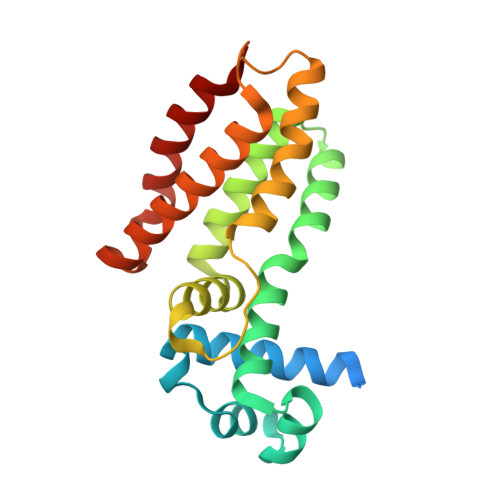Molecular basis for control of antibiotic production by a bacterial hormone.
Zhou, S., Bhukya, H., Malet, N., Harrison, P.J., Rea, D., Belousoff, M.J., Venugopal, H., Sydor, P.K., Styles, K.M., Song, L., Cryle, M.J., Alkhalaf, L.M., Fulop, V., Challis, G.L., Corre, C.(2021) Nature 590: 463-467
- PubMed: 33536618
- DOI: https://doi.org/10.1038/s41586-021-03195-x
- Primary Citation of Related Structures:
6SRN, 7KY1 - PubMed Abstract:
Actinobacteria produce numerous antibiotics and other specialized metabolites that have important applications in medicine and agriculture 1 . Diffusible hormones frequently control the production of such metabolites by binding TetR family transcriptional repressors (TFTRs), but the molecular basis for this remains unclear 2 . The production of methylenomycin antibiotics in Streptomyces coelicolor A3(2) is initiated by the binding of 2-alkyl-4-hydroxymethylfuran-3-carboxylic acid (AHFCA) hormones to the TFTR MmfR 3 . Here we report the X-ray crystal structure of an MmfR-AHFCA complex, establishing the structural basis for hormone recognition. We also elucidate the mechanism for DNA release upon hormone binding through the single-particle cryo-electron microscopy structure of an MmfR-operator complex. DNA binding and release assays with MmfR mutants and synthetic AHFCA analogues define the role of individual amino acid residues and hormone functional groups in ligand recognition and DNA release. These findings will facilitate the exploitation of actinobacterial hormones and their associated TFTRs in synthetic biology and in the discovery of new antibiotics.
Organizational Affiliation:
Department of Chemistry, University of Warwick, Coventry, UK.














